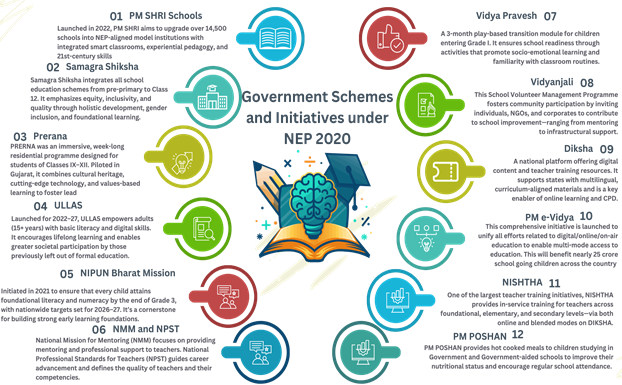Five years ago, on July 29, India embarked on a journey to overhaul its education system with the launch of the National Education Policy 2020. Today, its impact is increasingly visible in classrooms across the country – reshaping how children learn, how teachers teach, and how schools function.
NEP 2020 marked a paradigm shift from rigid, exam-centric education to a more flexible, inclusive, and learner-focused model. Anchored in India’s cultural heritage and aligned with global goals like Sustainable Development Goal 4 (SDG-4), the policy laid out a vision for an education system that fosters curiosity, critical thinking, and lifelong learning – from the foundational stage to secondary levels.
One of NEP’s major successes has been the prioritisation of early childhood education and foundational learning. With the launch of the NIPUN Bharat Mission in 2021, the government aimed to ensure that every child achieves Foundational Literacy and Numeracy (FLN) by Grade 3. Initiatives such as Vidya Pravesh, Balvatikas, and Jadui Pitara have introduced millions of children to joyful, play-based learning. The results have been promising: Annual Status of Education Report (ASER) 2024 reported a significant rise in foundational reading and arithmetic levels among Class III children in government schools. 23.4% children could read Grade II-level text in 2024, up from 16.3% in 2022 and 20.9% in 2018. Arithmetic proficiency has also improved, with 27.6% of Class III students now able to perform basic subtraction, compared to 20.2% in 2022 and 20.9% in 2018.
A restructured school framework under the 5+3+3+4 model is supported by two new national curriculum frameworks – National Curriculum Framework for the Foundational Stage (NCF-FS) and National Curriculum Framework for School Education (NCF-SE). These have replaced rote learning with competency-based, multidisciplinary education. New textbooks like Mridang, Sarangi, and Joyful Mathematics reflect India’s linguistic and cultural diversity while encouraging deeper engagement and creativity. Vocational education now begins as early as Grade 6, and career pathways are supported through the National Credit Framework.
Samagra Shiksha, the flagship school reform scheme, has helped boost enrolment and reduce dropouts. Infrastructure has improved substantially – with nearly all schools having access to drinking water, electricity, and gender-inclusive toilets. Hostels under schemes like Pradhan Mantri Janjati Adivasi Nyaya Maha Abhiyan (PM-JANMAN) and Dharti Aaba Janjatiya Gram Utkarsh Abhiyan (DAJGUA), along with 5,269 Kasturba Gandhi Balika Vidyalayas, have provided critical support to girls and children from marginalised communities.
The digital push has also been transformative. Platforms like Digital Infrastructure for Knowledge Sharing (DIKSHA) and PM eVIDYA have enabled access to quality learning content in over 130 languages, even during the pandemic. The Rashtriya Vidya Samiksha Kendra (RVSK) now provides real-time education data, improving governance and accountability.
Teachers remain central to NEP’s success. Over 14 lakh educators have undergone training through National Initiative for School Heads’ and Teachers’ Holistic Advancement (NISHTHA), with continuous support through digital platforms. Assessment reforms are underway through Performance Assessment, Review and Analysis of Knowledge for Holistic Development (PARAKH), which has championed competency-based evaluations and holistic progress cards that assess not only academics but creativity, socio-emotional development, and well-being.
NEP 2020 also places strong emphasis on inclusion. The Pre Assessment Holistic Screening Tool (PRASHAST) tool helps schools support children with disabilities, while Indian Sign Language has been introduced as a secondary subject. The National Institute of Open Schooling (NIOS) has developed flexible pathways for out-of-school children and even for Agniveers to complete their education.














